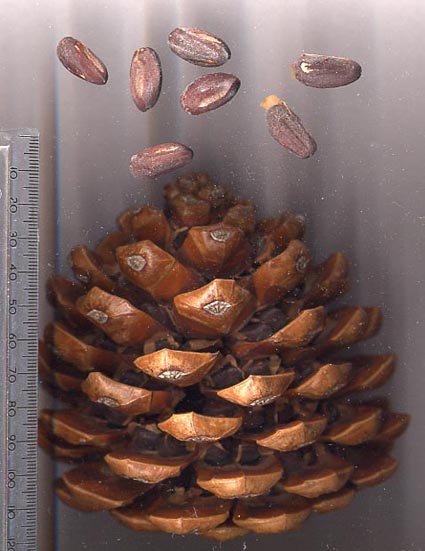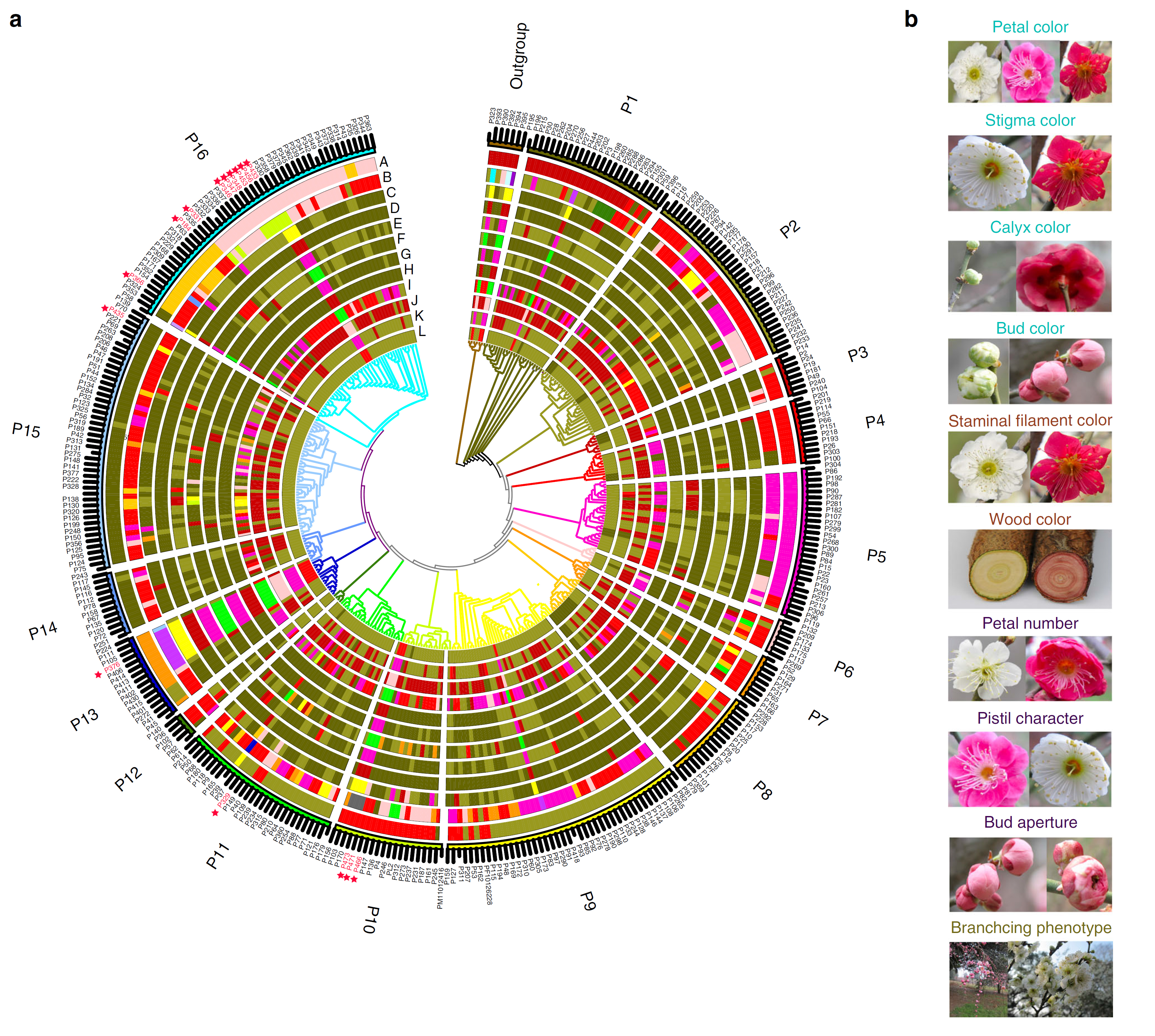|
Maesil-cha
''Maesil-cha'' () or plum tea is a traditional Korean tea made from ''maesil'' (fresh plums), '' omae'' (smoked plums), or ''maesil-cheong'' (plum syrup). Preparation Most commonly, ''maesil-cha'' is made by mixing ''maesil-cheong'' (plum syrup) with hot or cold water. Sometimes, plum tea is made with plum extract, made by grating green plums, mixing it with small amount of water and juicing through hemp cloth, and sun-drying it. The extract is kept in a glass container in a cool area, and mixed with hot water to make tea. Plum tea made with smoked plums are usually called '' omae-cha'' ("smoked plum tea"). See also * ''Maehwa-cha'' – plum blossom tea * ''Maesil-ju ''Maesil-ju'' (), also called plum wine, plum liquor, or plum liqueur, is an alcoholic drink infused with '' maesil'' (plums).The exact origins of ''Maesil-ju'' are unknown, but it is thought to date back to the Goryeo Dynasty (918-1392). Ingre ...'' – plum wine * '' Suānméitāng'' – Chinese sour plu ... [...More Info...] [...Related Items...] OR: [Wikipedia] [Google] [Baidu] |
Maesil-cheong
''Cheong'' () is a name for various sweetened foods in the form of syrups, marmalades, and fruit preserves. In Korean cuisine, ''cheong'' is used as a tea base, as a honey-or-sugar-substitute in cooking, as a condiment, and also as an alternative medicine to treat the common cold and other minor illnesses. Originally, the word ''cheong'' () was used to refer to honey in Korean royal court cuisine. The name ''jocheong'' (; "crafted honey") was given to ''mullyeot'' (liquid-form ''yeot'') and other human-made honey-substitutes. Outside the royal court, honey has been called ''kkul'' (), which is the native (non- Sino-Korean) word. Varieties * ''Jocheong'' (; "crafted honey") or ''mullyeot'' (; liquid ''yeot''): rice syrup or more recently also corn syrup * ''Maesil-cheong'' (; " plum syrup") * ''Mogwa-cheong'' (; quince preserve) * ''Mucheong'' (; radish syrup) * ''Yuja-cheong'' (; yuja marmalade) Maesil-cheong ''Maesil-cheong'' (, ), also called "plum syrup", is an anti-m ... [...More Info...] [...Related Items...] OR: [Wikipedia] [Google] [Baidu] |
Pine Nut
Pine nuts, also called piñón (), pinoli (), pignoli or chilgoza (), are the edible seeds of pines (family Pinaceae, genus ''Pinus''). According to the Food and Agriculture Organization, only 29 species provide edible nuts, while 20 are traded locally or internationally owing to their seed size being large enough to be worth harvesting; in other pines, the seeds are also edible, but are too small to be of notable value as a human food. Species and geographic spread In Asia, two species in particular are widely harvested: Korean pine (''Pinus koraiensis'') in northeast Asia (the most important species in international trade) and chilgoza pine (''Pinus gerardiana'') in the western Himalaya. Four other species, Siberian pine (''Pinus sibirica''), Siberian dwarf pine (''Pinus pumila''), Chinese white pine (''Pinus armandii'') and lacebark pine (''Pinus bungeana''), are also used to a lesser extent. Russia is the largest producer of ''Pinus sibirica'' nuts in the world, followed b ... [...More Info...] [...Related Items...] OR: [Wikipedia] [Google] [Baidu] |
Doosan Corporation
Doosan Corporation is a corporate holding company headquartered in Euljiro 6-ga, Jung-gu, Seoul, South Korea. History * 1896 Park Seung-jik opened Korea's first modern dry goods store, selling cloth. * 1925 Changed the name of Park Seung-Jik Store Limited to Doosan Store * 1953 Established the Oriental Brewery and began producing OB beer. * 1960 Established Dongsan Construction and Engineering (currently Doosan Engineering & Construction)/Acquired Hapdong News Agency (currently Yonhap News) * 1966 Founded Hanyang Food * 1967 Founded Yoonhan Machinery (currently Doosan Mecatec) * 1969 Founded Hankook Bottle and Glass * 1979 Established Doosan CCK Can Manufacturing * 1980 Founded OB Seagram * 1982 Formed OB Bears (currently Doosan Bears) * 1996 Celebrated 100th anniversary. Announced Doosan Group's new Certificate of Incorporation. * 1998 Incorporated nine affiliates and re-launched the company as Doosan Corporation in September. * 2008 Acquired the Chung-Ang University Foundation ... [...More Info...] [...Related Items...] OR: [Wikipedia] [Google] [Baidu] |
Maesil-ju
''Maesil-ju'' (), also called plum wine, plum liquor, or plum liqueur, is an alcoholic drink infused with ''maesil'' (plums).The exact origins of ''Maesil-ju'' are unknown, but it is thought to date back to the Goryeo Dynasty (918-1392). Ingredients ''Maesil-ju'' is made with ''maesil ''Prunus mume'' is an East Asian and Southeast Asian tree species classified in the ''Armeniaca'' section of the genus ''Prunus'' subgenus ''Prunus''. Its common names include Chinese plum, Japanese plum, and Japanese apricot. The flower, long ...'' (; "plums"), preferably ripe ''hwangmae'' (; "yellow plums"), which are yellowish in color, fragrant and firm. Unripe ''cheongmae'' (; "green plums")—firmer and less fragrant—can also be used. Bruised or over-ripened plums may make the wine cloudy. Damaged fruits should be avoided, as direct contact of plum seeds with alcohol may produce a small amount of Hydrogen cyanide, prussic acid, due to the amygdalin in plum seeds. However, toxicity van ... [...More Info...] [...Related Items...] OR: [Wikipedia] [Google] [Baidu] |
Maehwa-cha
''Maehwa-cha'' () or plum blossom tea is a traditional Korean tea made by infusing dried flowers of Korean plum in hot water. During the early spring, half-open buds of plum blossoms are picked, dried, and preserved in honey. It is served, with ten flowers in a teapot and by pouring of hot water. The tea can be enjoyed after one to two minutes of steeping. Gallery Maehwa-cha and hwajeon.jpg, ''Maehwa-cha'' (plum blossom tea) enjoyed with ''hwajeon'' (flower pancakes) See also * ''Maesil-cha'', Korean plum tea * ''Suānméitāng Suanmeitang or sour prune drink is a traditional Chinese beverage made from smoked plums, rock sugar, and other ingredients such as sweet osmanthus. Due to the sour plums used in its production, ''suanmeitang'' is slightly salty in addition to bei ...'', Chinese sour plum drink References Korean tea Flower tea {{Tea-stub ... [...More Info...] [...Related Items...] OR: [Wikipedia] [Google] [Baidu] |
Smoked Plum
Smoked plum is the smoked fruit of Asian plums, used in East Asian cuisine and medicine. It is called ''wūméi'' () in Mandarin, ''omae'' (; ) in Korean, ''ubai'' (; ) in Japanese, and ''Ô mai '' in Vietnamese. Overview Smoked plums, matte black to dark brown, with a rugged surface, have a unique flavor with a sour taste. The fruit is spherical or oblate, around long and in diameter. The surface is wrinkled, with the round stem-end underside. The fruit kernel is hard, olate, yellowish brown, long, wide, and thick, with a dotted surface. The seed is flat obloid and light yellow. Production Unripe plums are picked in early summer, smoked, and dried at . Use Cuisine In China, smoked plums are used to make ''suānméitāng'', a sour plum drink. In Korea, smoked plums are used to make traditional teas and drinks such as '' omae-cha'' (smoked plum tea) and ''jeho-tang'' (medicinal summer drink). Medicine Latin (pharmaceutical) name for smoked plums is ''Mume Fructu ... [...More Info...] [...Related Items...] OR: [Wikipedia] [Google] [Baidu] |
Naver
Naver (Hangul: 네이버) is a South Korean online platform operated by the Naver Corporation. It was launched in 1999 as the first web portal in South Korea to develop and use its own search engine. It was also the world's first operator to introduce the comprehensive search feature, which compiles search results from various categories and presents them in a single page. Naver has since added a multitude of new services ranging from basic features such as e-mail and news to the world's first online Q&A platform Knowledge iN. As of September 2017, the search engine handled 74.7% of all web searches in South Korea and had 42 million enrolled users. More than 25 million Koreans have Naver as the start page on their default browser and the mobile application has 28 million daily visitors. Naver has also been referred to as 'the Google of South Korea'. Owing to its rising popularity in Japan, Naver is now competing with Kakao to claim position in Japanese market of web novel and ... [...More Info...] [...Related Items...] OR: [Wikipedia] [Google] [Baidu] |
The Korea Herald
''The Korea Herald'' is a leading English-language daily newspaper founded in 1953 and published in Seoul, South Korea. The editorial staff is composed of Korean and international writers and editors, with additional news coverage drawn from international news agencies such as the Associated Press. ''The Korea Herald'' is operated by Herald Corporation. Herald Corporation also publishes ''The Herald Business'', a Korean-language business daily, ''The Junior Herald'', an English weekly for teens, ''The Campus Herald'', a Korean-language weekly for university students. Herald Media is also active in the country's booming English as a foreign language sector, operating a chain of hagwons as well as an English village. ''The Korea Herald'' is a member of the Asia News Network. History ''The Korean Republic'' ''The Korea Herald'' began in August 1953 as ''The Korean Republic'', a 4-page tabloid English-language daily. In 1958, ''The Korean Republic'' published its fifth anniversary ... [...More Info...] [...Related Items...] OR: [Wikipedia] [Google] [Baidu] |
Doopedia
''Doosan Encyclopedia'' is a Korean language encyclopedia published by Doosan Donga (두산동아). The encyclopedia is based on the ''Dong-A Color Encyclopedia'' (동아원색세계대백과사전), which comprises 30 volumes and began to be published in 1982 by Dong-A Publishing (동아출판사). Dong-A Publishing was merged into Doosan Donga, a subsidiary of Doosan Group, in February 1985. The ''Doosan Encyclopedia'' is a major encyclopedia in South Korea. Digital edition EnCyber The online version of the ''Doosan Encyclopedia'' was named EnCyber, which is a blend of two English words: ''Encyclopedia'' and ''Cyber''. The company has stated that, with the trademark, it aims to become a center of living knowledge. EnCyber provides free content to readers via South Korean portals such as Naver. Naver has risen to the top position in the search engine market of South Korea partially because of the popularity of EnCyber encyclopedia. When Naver exclusively contracted Doosan Doo ... [...More Info...] [...Related Items...] OR: [Wikipedia] [Google] [Baidu] |
Herbal Tea
Herbal teas, also known as herbal infusions and less commonly called tisanes (UK and US , US also ), are beverages made from the infusion or decoction of herbs, spices, or other plant material in hot water. Oftentimes herb tea, or the plain term ''tea'', is used as a reference to all sorts of herbal teas. Many herbs are used in herbal medicine. Some herbal blends contain actual tea (e.g., the Indian classic masala chai). The term "herbal" tea is often used in contrast to the so-called ''true'' teas (e.g., black, green, white, yellow, oolong), which are prepared from the cured leaves of the tea plant, '' Camellia sinensis''. Unlike true teas (which are also available decaffeinated), most tisanes do not naturally contain caffeine. There are a number of plants, however, that ''do'' contain caffeine or another stimulant, like theobromine, cocaine or ephedrine. Some have the opposite effect, acting as a sedative. Some common infusions have specific names such as , ''mate'' (ye ... [...More Info...] [...Related Items...] OR: [Wikipedia] [Google] [Baidu] |
Maesil
''Prunus mume'' is an East Asian and Southeast Asian tree species classified in the ''Armeniaca'' section of the genus ''Prunus'' subgenus ''Prunus''. Its common names include Chinese plum, Japanese plum, and Japanese apricot. The flower, long a beloved subject in the traditional painting and poetry of East Asia and Vietnam, is usually called plum blossom. This distinct tree species is related to both the plum and apricot trees. Although generally referred to as a plum in English, it is more closely related to the apricot. In East Asian cuisine (Chinese, Japanese and Korean) and Vietnamese cuisine, the fruit of the tree is used in juices, as a flavouring for alcohol, as a pickle and in sauces. It is also used in traditional medicine. The tree's flowering in late winter and early spring is highly regarded as a seasonal symbol. ''Prunus mume'' should not be confused with ''Prunus salicina'', a related species also grown in China, Japan, Korea and Vietnam. Another tree, ''Prunus ... [...More Info...] [...Related Items...] OR: [Wikipedia] [Google] [Baidu] |

_(cropped).jpg)


